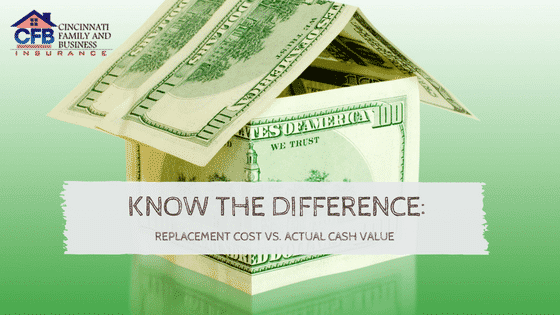
Know the Difference: Replacement Cost Vs. Actual Cash Value
Homeowner’s and renter’s insurance policies offer personal property coverage. There are many categories that insurance companies use to assess reimbursement for theft or damage to an item. We will discuss the replacement cost and actual cost value. The coverage stated in your policy will determine which one applies to you. A good place to start is to know the difference between the two different claims payouts.
What is the actual cost value?
This is one of the methods that an insurance company uses to reimburse your claim. It is the least expensive and benefits those on a tight budget. Using the actual cost value (ACV) method, you will not receive the full amount of money that your paid when you originally bought the item. An exception to that rule would be if you have some antiques in your home.
The insurance company has a way of compiling the actual cash value of an object. They start with determining the market value of an item. This begins with discovering how much you paid for it. Next, they consider how long you have had the object. There are other criteria that may be used such as the expected lifespan of an item and its condition. The ACV is the value of an item minus depreciation.
What is the replacement cost?
It is another method that an insurance company uses to pay out a personal property claim. This is the most recommended coverage to have because it has more benefits for the home owner. A claim is handled differently than an actual cash value request. The claim amount tends to be of a higher amount.
When using this process, the owner is offered how much it would cost to re-purchase the damaged item as if new. This type of coverage is used for many objects including insuring the house itself. Insurance companies use contractors with house structure claims due to their expertise in knowing the materials used and how to estimate the costs to re-do a home.
In Closing
There are many things to consider when preparing to buy new coverage or switching insurance companies. Do you prefer replacement cost or actual cash value? In both instances, you need to already have the coverage before an incident occurs. Consider the cost and benefits of the different value assessments. Do you have many high-end products to insure or a small amount of less expensive items? This may make a difference.
It’s important to read your policy and fully understand the type of plan that you have. Don’t forget to ask an insurance professional if you have questions. It would be helpful to take an inventory of your possessions. Taking pictures of your inventoried items will make the process easier when you have to file a claim. Another factor to keep in mind is the deductibles that you would need to pay before insurance will make a payment. Lastly, remember that your insurance has limits and may not pay the entire cost of replacements.

Comments
Not found any comments yet.